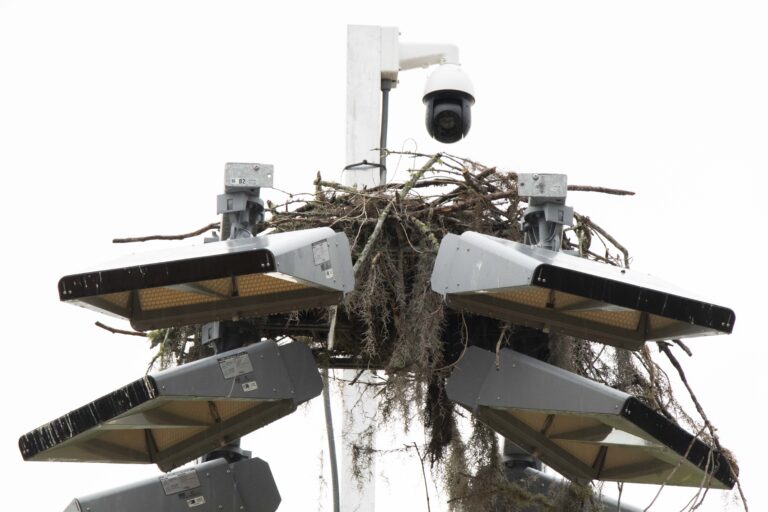Legacy Post Disclaimer
This is a #Legacy post imported from The Apalachicola Time’s previous platform. If you’re experiencing issues with this article, please email us at news@nevespublishing.com.
FWC may OK limited harvest of small goliaths
For the first time in more than 30 years, Florida fishing
regulators are on the verge of allowing for a limited, highly regulated harvest
of the goliath grouper.
The Florida Fish and Wildlife Conservation Commission will
take up a staff recommendation to allow for the catch of juvenile-sized
goliaths in all state waters except for except those of Palm Beach County south
through Atlantic coast of the Keys, where spearing the large fish by divers.
If adopted as written, the goliath regulations would allow
for a recreational harvest of 200 fish per year, no more than one fish per
person with permit and tag issued via lottery. Only a hook-and-line could be
used, to take goliaths with a limit of between 20 and 36 inches.
The season would be limited to March through May season,
which regulators say would reduce additional pressure on goliath when they may
be susceptible to impacts from red tide events, which primarily occur in the
summer and late fall.
In addition, the 200 fishermen lucky enough to have their
names drawn in a lottery would pay a $500 special use permit fee, intended to
offset cost of materials and staff time needed to conduct the experimental three-
to five-year program.
However, the commission could choose to charge up to $3,600
based on season length and the statutory limit of $300 per week, reads the
report, authored by Jessica McCawley, from FWCs Marine Fisheries Management division.
In the divisions analysis, McCawley wrote that while goliath
abundance is expected to continue to increase, the fish has life history
characteristics and behaviors that make them more vulnerable to natural
mortality events and overfishing, (and they) require a unique management
approach for conservation success.
Numerous factors in goliaths life history make them more
susceptible to overfishing, such as their large size and tendency to gather in
high numbers at predictable locations, making them easy to target and catch,
she wrote.
The agency recognizes goliaths role in the ecosystem as a
large and important predator that helps maintain healthy, resilient natural
reef ecosystems. FWC also understands that there are diverse stakeholder values
for goliath and management should account for this by providing multiple means
of access to this fishery while also promoting continued population rebuilding,
she wrote. Currently, access is provided to anglers through catch-and-release
fishing and recreational divers through sightseeing opportunities.
The report says fishery managers, researchers, and fishermen
continue to observe increasing numbers of goliath in Florida, but notes that federal
fishery management councils scientific advisors have continued to reject the
use of the federal stock assessment process, citing unknowns about life history
such as uncertainty about maximum age, the absence of long-term datasets and uncertainty
regarding historical landings, and lack of information about the stock outside
the southeastern U.S.
It notes that in 2006, NOAA Fisheries removed goliath from
their Species of Special Concern , and in 2018, the International Union for the
Conservation of Nature improved their listing of goliath from critically
endangered to vulnerable on their Red List of Threatened Species.
Ultimately, opinions on goliath management are strongly
held and highly variable, McCawley wrote. Those who support a harvest option
typically do so because they see the population as being rebuilt in Florida,
that goliath are overpopulated and harming the ecosystem, they see goliath as a
nuisance when targeting other species, or they want the opportunity to harvest
a goliath.
Those who do not support a harvest typically point to
goliath as being important to the ecosystem, their high value for ecotourism,
potentially harmful mercury levels found in larger goliath, she wrote. Or
that rebuilding is not complete throughout their historic range; or they may
believe that harvest should never be allowed for this species.
The proposed rule of allowing for no more than a fish of 20
to 36 inches total length is designed to conserve reproductive adult goliath, minimize
concerns associated with mercury levels, and provide an opportunity to harvest
a desirable fish. Adult goliaths are known to length of up to eight feet, and weights as much as 700 to 800 pounds.
Goliath within the proposed slot limit are still in their
juvenile life stage and typically weigh anywhere between 5 and 32 pounds,
reads the report. The proposed minimum of 20 inches total length coincides
with the size at which goliath transition from their nursery habitat to a more
estuarine environment. Most goliath within this size range are typically found
in nearshore environments, prior to moving offshore and maturing into adults.
Long-term rebuilding of a stock requires the rebuilding of
fish in older age classes, it reads. Individuals within the proposed slot
limit have shown the largest increases in abundance in recent years. The slot
minimum size limit protects the smallest individuals, which are the most
susceptible to natural mortality. Conversely, the slot maximum size limit
prevents removal of reproductive adults and conserves fish in older age
classes.
The proposal would require permit holders to attach a tag to
the lower jawbone of the harvested fish, and report information about their
catch to FWC. They may also be required to submit a biological sample, which
could include a fin clip from the harvested fish to be used for genetic
analysis.
The rule change is expected to be taken up at the FWC
meeting on Wednesday morning, Oct. 6, and if approved, staff would gather
public feedback and return for a final public hearing in March 2022.



Meet the Editor
David Adlerstein, The Apalachicola Times’ digital editor, started with the news outlet in January 2002 as a reporter.
Prior to then, David Adlerstein began as a newspaperman with a small Boston weekly, after graduating magna cum laude from Brandeis University in Waltham, Massachusetts. He later edited the weekly Bellville Times, and as business reporter for the daily Marion Star, both not far from his hometown of Columbus, Ohio.
In 1995, he moved to South Florida, and worked as a business reporter and editor of Medical Business newspaper. In Jan. 2002, he began with the Apalachicola Times, first as reporter and later as editor, and in Oct. 2020, also began editing the Port St. Joe Star.